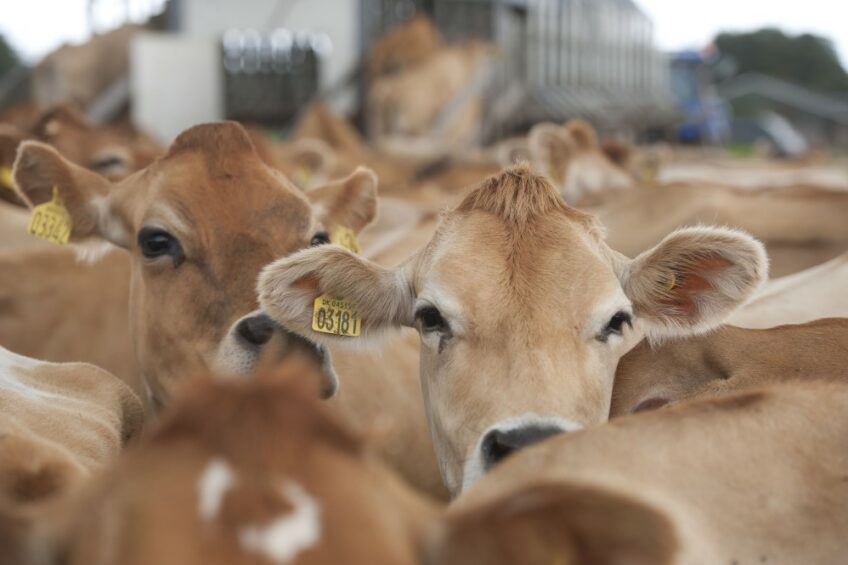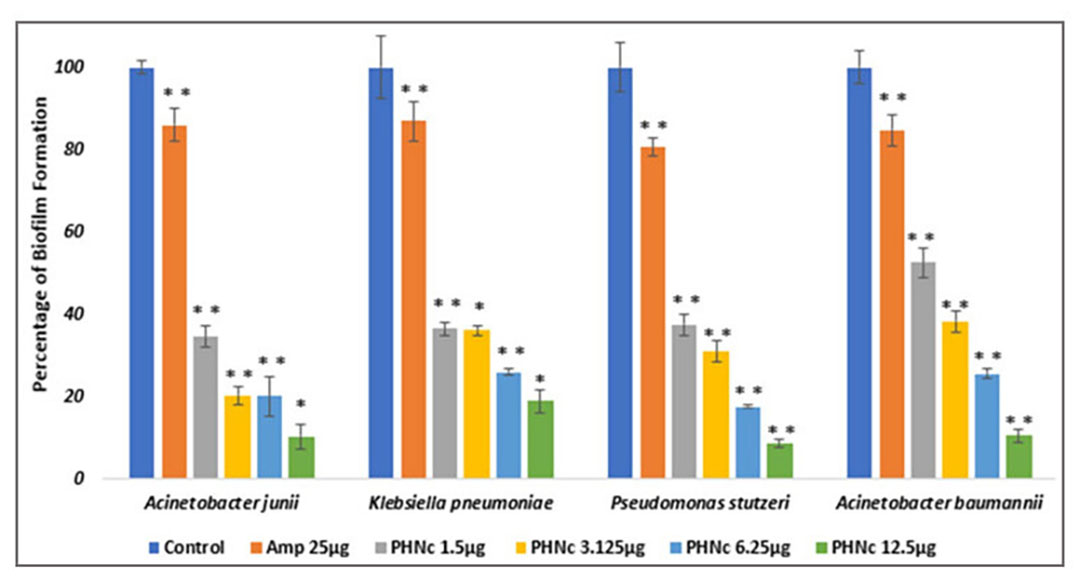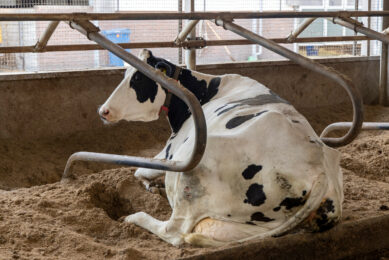Prevent mastitis: An effective alternative to antibiotics

The use of antibiotics in dairy farming has led to increased antibiotic resistance, presenting a major obstacle to the treatment of mastitis. Recent advancements in nanotechnology led to the development of polyherbal nano-colloids as a potential alternative to the use of antibiotics.
Mastitis in dairy cows is still one of the common diseases costing the dairy industry. The disease inflicts abnormalities in milk and decreases milk production. Apart from antibiotics, dairy farmers have few tools to treat this common and costly udder infection.
On the other side, while antibiotics do work, any treated cow must be taken out of the milking pool for a certain period to prevent contamination of the milk supply with antibiotic residues. Adding to that, antibiotics do nothing to repair the tissue damage caused by the infection. With bacterial resistance to antibiotics growing each year, it is critical that alternative solutions be found to treat mastitis.
In a recent study published in the Journal of Applied Biochemistry and Biotechnology, researchers found polyherbal nano-colloids as a potential farmers’ tool kit against mastitis.
Polyherbal nano-colloids (PHNc)
Health practitioners report that combinations of different herbs as a single formula help through buffering and synergism by reducing the side effects and acting as an antagonist. In this study, researchers evaluated the combined effects of 6 herbal extracts, which were harnessed for the formulation of polyherbal nano-colloids (PHNc), to control bovine mastitis-causing pathogens, namely, Acinetobacter junii, Klebsiella pneumoniae, Pseudomonas stutzeri, and Acinetobacter baumannii.
The polyherbal nano-colloid was formulated by using herbs: Syzygium aromaticum, Cinnamomum verum, Emblica officinalis, Terminalia belerica, Terminalia chebula, and Cymbopogon citratus. The phytochemical analysis of these polyherbal extracts showed the presence of phenols, tannins, saponins, flavonoids, and steroids, which are known to have antimicrobial activities. The polyherbal nano-colloid was validated for its antibacterial activity through the agar well diffusion method, determining bactericidal and bacteriostatic activities. The bacterial antibiofilm activity of the nano-colloid was also determined.
Bacteriostatic and bactericidal effects
Bacteriostatic concentration is the concentration of PHNc which inhibits the growth of organisms up to a certain period, helping to establish the minimum inhibitory concentration of PHNc for a certain period. Bactericidal concentration is the minimum concentration at which bacteria is completely killed.
The study showed that the average bacteriostatic concentration of PHNc is 5 µg/ml; at this concentration, PHNc can inhibit bacterial growth up to 73%, for a period of 12 hours. The bactericidal concentrations of PHNc were 12.5 µg/ml for Acinetobacter junii and Klebsiella pneumoniae, and 6.25 µg/ml for Pseudomonas stutzeri and Acinetobacter baumannii.
The nano-colloid was reported to trigger toxicological effects on the test organisms. It was stated that toxicity may be developed through the release of silver ions and by increasing the ROS species inside the cell; the silver ions can directly interact with biological macromolecules and disrupt the normal metabolic pathways, which ultimately slow down the bacteria’s cellular activity. In addition, phytocompounds present in the polyherbal extract and metals such as C, S, Mg, and Si act synergistically with nano-silver and enhance its antibacterial activity to several folds.
Table 1 – Zone of inhibition following treatment with PHNc against bovine mastitis pathogens
The bactericidal concentrations of PHNc were 12.5 µg/ml for Acinetobacter junii and Klebsiella pneumoniae, and 6.25 µg/ml for Pseudomonas stutzeri and Acinetobacter baumannii. The mechanism of nanoparticles killing bacteria was explained as the interaction of nanoparticles with the outer membrane of the bacterial cell wall, followed by disintegration of the cell membrane, which produces pits over the cell membrane and a decrease in the production of ATP by switching of the proton motive force and slowing down the overall metabolic pathway. Finally, the overall performance of the cell is disturbed, leading to cell death. From the experiment, it was concluded that PHNc is a potent bactericidal agent.
Antibiofilm activity
Biofilm formation plays a major role in causing infection; it is regulated by quorum sensing (cell communication) compounds secreted by the organism in response to signals once a certain population threshold is reached. The antibiofilm effect of PHNc was determined with different concentrations. From the experiment, it was observed that biofilm formation is inhibited by the nano-colloid in a dose-dependent manner.
The average inhibition potential rates of PHNc for 6.25 µg/ml, 12.5 µg/ml, 25 µg/ml, and 50 µg/ml were found as 60%, 69%, 78%, and 88% for Acinetobacter junii, Klebsiella pneumoniae, Pseudomonas stutzeri, and Acinetobacter baumannii, respectively, at 48 hours post treatment. The researchers stated that PHNc attenuates the quorum signals and prevents the formation of biofilm.
From the phytochemical test conducted in this study, the nano-colloid was confirmed to contain phenols, tannins, steroids, and saponins which synergistically work as a quorum quencher. In addition, some reports support the fact that phenolic compounds can chelate the iron present in the growth medium, gradually disrupting the biofilm formation process.
“From this experiment, we can conclude that PHNc could be a potent eco-friendly alternative to control the biofilm formation caused by pathogenic organisms, which could be the cost-effective treatment for controlling the spread of disease in cattle through transmission as well as prevention of transmission of milk-borne pathogens to humans,” they concluded.
Figure 1 – Percentage of biofilm formation in pathogenic strain upon treatment with different concentrations of polyherbal nano-colloid (PHNc) and ampicillin (Amp).

In conclusion, polyherbal nano-colloid showed potent bacteriostatic, bactericidal, and antibiofilm activities against mastitis-causing pathogens. Therefore, a novel combination of polyherbal nano-colloids could be an effective alternative to antibiotics in preventing mastitis as well as preventing the outbreak of milk-borne human pathogens – enhancing the safety of dairy food products. The researchers believe a mass production of the nano-colloids could be commercialised as a topical application to prevent the spread of mastitis and reduce the mastitis economic loss in the dairy industry.
This article is based on the original article by S. Ranjani, P. Shruthy Priya, Maroudam Veerasami, and S. Hemalatha. 2022. Novel Polyherbal Nanocolloids to Control Bovine Mastitis. Applied Biochemistry and Biotechnology, Vol 194, 2022. 10.1007/s12010-021-03748-w.
Join 13,000+ subscribers
Subscribe to our newsletter to stay updated about all the need-to-know content in the dairy sector, two times a week.










